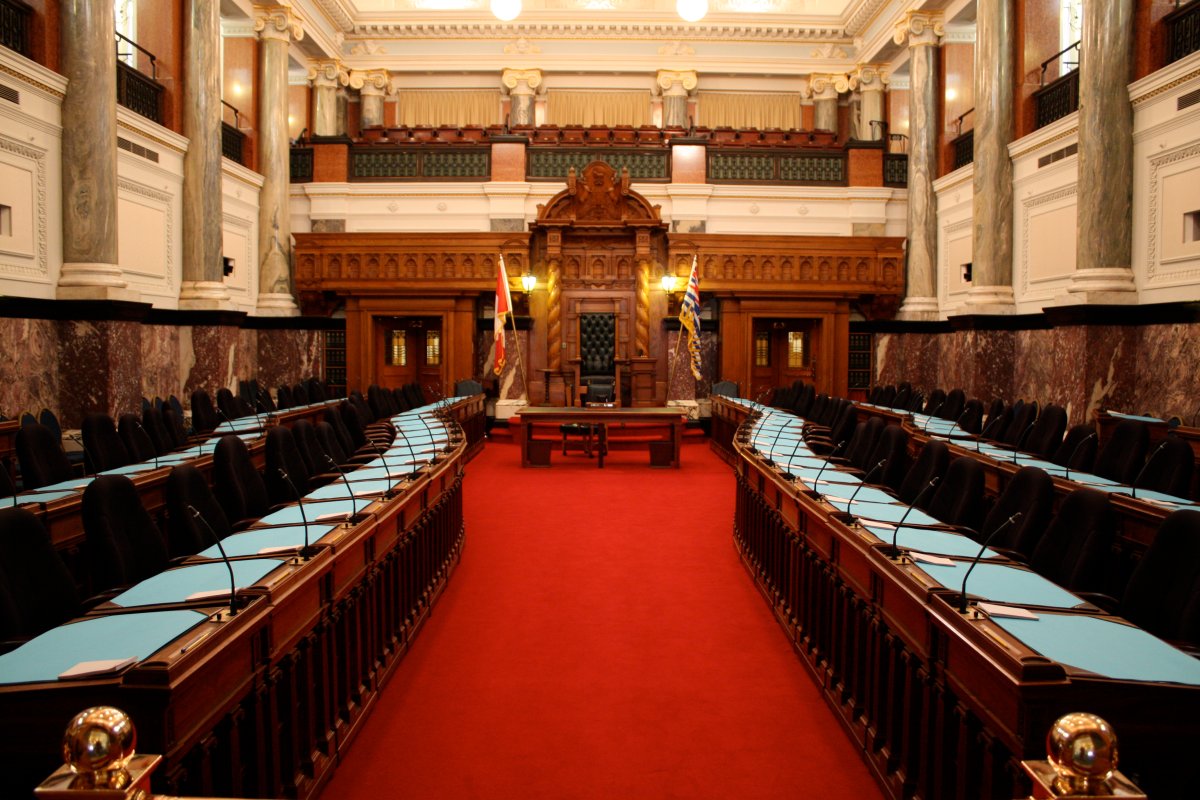There are currently 85 MLAs in the provincial government.

And if the Liberal government had their way, that number wouldn’t be going up anytime soon – even though it would probably help them.
A white paper released by Attorney General Suzanne Anton proposes amendments to legislation that would keep the number of ridings in the North (8 current seats), Cariboo (5), and Kootenays (4) the same, and freezing the total number of districts at 85.
“British Columbia’s demographics have changed significantly since the act was first passed almost 25 years ago, and recent boundaries commissions have found it challenging to balance population growth with the need to ensure effective representation for northern and rural British Columbians,” said the government in a release.
In the last 50 years, the number of ridings in B.C. has increased dramatically.
Why do the number of MLAs keep going up?
By law, a non-partisan commission convenes after every third election to redraw B.C.’s political map. Each riding’s population is supposed to be within 25% of the average to ensure proper representation by population.
Ridings in the three regions highlighted by the Liberals are regularly much smaller in size compared to the rest of the province. In the 2013 election, 13 of the 15 ridings with the least number of registered voters came from these areas.
Communities and local politicians argue passionately against making their giant ridings even larger whenever the issue comes up. To compromise, commissions have generally increased the number of seats in fast growing areas without reducing seats in the interior.
Liberals would likely benefit from more MLAs
But Global’s Legislative Bureau Chief Keith Baldrey says the proposal by the Liberal government is odd, because they would be the likely beneficiaries of any increase in seats.
“It’s rather surprising that they opted to go this route, rather than put forward a plan that would create more seats in the fastest growing reasons that would give them three, maybe four seats,” he says.
In this year’s election, 10 of the 15 most populous ridings were bunched in clumps in either Richmond, the Okanagan, or the Fraser Valley – which have reliably voted for the Liberals election after election. The other heavily populated areas are isolated from one another, making it less likely the commission would give their areas an additional seat.
However, the end result of the next drawing of B.C.’s political map is far from certain. The Electoral Boundaries Commission is a non-partisan group and has yet to be appointed. For now, the government says it wants to hear from the people.
“We encourage the public to read and provide input on the white paper, as this is something that impacts every British Columbian,” says Anton.
- ‘One disaster after another’: Denman Islanders steamed over cable ferry outage
- Hungry bear rips through garage door of Port Moody home to get to garbage can
- ‘Absolutely inspirational’: Canucks fan with ALS a symbol of hope
- Lawsuit claims ex-cop, Mountie lost security clearance over false CSIS reports




Comments